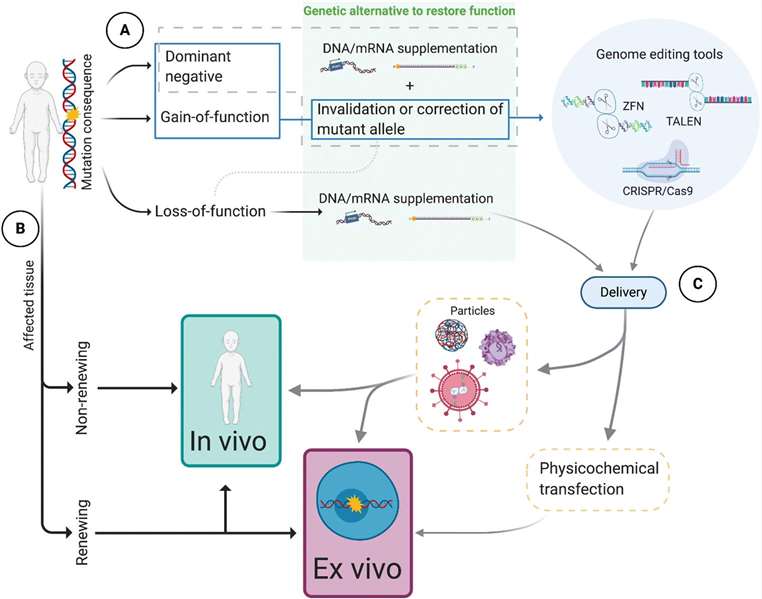What is a rare disease?
A rare disease, also known as an orphan disease, is a medical condition that affects a small number of people. In most countries, a disease is considered rare when it affects fewer than 1 in 2,000 individuals. However, this definition may vary from country to country.
Rare diseases can be genetic, meaning they are caused by an alteration or mutation in a person's genes, or they can be acquired later in life due to infections, environmental factors, or other causes. These conditions are often chronic, progressive, and potentially life-threatening. They can have a wide range of symptoms and affect various organs and systems in the body.
Examples of rare diseases
1. Hutchinson-Gilford progeria syndrome: This rare genetic disorder causes rapid aging in children, resulting in a variety of health issues.
2. Fibrodysplasia ossificans progressiva: A condition in which soft tissues progressively turn into bone, resulting in loss of mobility and a second skeleton.
3. Stiff person syndrome: A neurological disorder characterized by muscle stiffness and spasms that can lead to difficulty moving or walking.
4. Prader-Willi syndrome: A complex genetic disorder that affects various aspects of physical and mental development, including compulsive overeating and obesity.
5. Harlequin ichthyosis: A severe genetic skin disorder that causes the skin to become thick, dry, and scaly, resulting in deep cracks and deformities.
6. Alice in Wonderland syndrome: A neurological condition characterized by a distorted perception of the body or surrounding objects, often leading to a sense of size distortion and hallucinations.
7. Auto-brewery syndrome: A rare condition in which the body ferments carbohydrates into alcohol, leading to symptoms similar to being intoxicated even without consuming alcoholic beverages.
8. Alien hand syndrome: A neurological disorder in which a person's hand shows autonomous, involuntary movements that are sometimes contradictory to their intentions.
9. Polyglandular autoimmune syndrome: A group of rare autoimmune disorders that affect multiple endocrine glands and lead to hormonal imbalances.
10. Cotard's syndrome: Also known as "walking corpse syndrome," this rare psychological disorder causes sufferers to believe that they are dead or do not exist.
Challenges of rare disease research
According to the Genetic and Rare Diseases Information Center, rare diseases are estimated to affect over 30 million people in the United States. Since individual rare diseases affect a small number of people, there is limited knowledge about their causes, diagnosis, treatment, and potential cure. This can lead to delayed or incorrect diagnosis, lack of effective treatments, and limited support or resources for patients and their families.
Due to their rarity, rare diseases often face challenges in research funding, clinical trials, and access to specialized healthcare services. Efforts are being made globally to raise awareness about rare diseases, improve diagnostics and therapies, and provide support to patients and families affected by these conditions.
Rare diseases R&D
In 2019, the U.S. Food and Drug Administration (FDA) approved the first gene therapy, Zolgensma, for the treatment of SMA. This breakthrough has shown promising results in improving the health and prolonging the lives of infants with this rare genetic disorder. So far, some promising areas of research and technological advancements could further lead to significant progress in rare disease research in the coming years, including but not limited to:
1. Stem cell therapies: Stem cell research is likely to make significant progress in the coming years. By harnessing the potential of stem cells, scientists hope to develop innovative therapies for rare diseases by replacing damaged tissue or regenerating organs.
2. Biomarker discovery: Another breakthrough expected is the identification of biomarkers that can aid in early diagnosis or monitoring of rare diseases. Biomarkers are specific indicators found in blood, tissues, or other biological fluids that can provide information about the presence or progression of a disease. They have the potential to revolutionize healthcare by enabling early intervention and personalized treatment plans for patients with rare diseases.
3. Gene therapies: Advances in large-scale DNA sequencing techniques, such as whole-genome sequencing and gene-editing technologies like CRISPR-Cas9, have the potential to significantly impact rare disease research. The development of gene therapy for rare diseases helps scientists identify disease-causing mutations and develop targeted therapies, leading to potential breakthroughs for several rare diseases.
4. Precision medicine: With the increasing availability of patient data and advancements in computational methods, researchers are developing personalized treatment strategies based on an individual’s genetic profile. Applying precision medicine principles to rare disease research can lead to more effective and customized treatments, potentially resulting in substantial breakthroughs.
5. Drug repurposing: As the understanding of specific diseases improves, researchers can explore repurposing existing drugs developed for other conditions. Identifying medications that can be effective against multiple diseases, including rare diseases, has the potential to significantly improve patient outcomes quickly.
6. Collaborative and data-sharing initiatives: Many rare diseases are so rare that it is challenging for individual researchers or institutions to collect and analyze enough data to conclude. Collaborative efforts, supported by technological platforms and data-sharing initiatives, can help unite researchers worldwide and provide access to larger datasets, accelerating rare disease research and facilitating breakthroughs.





Comments